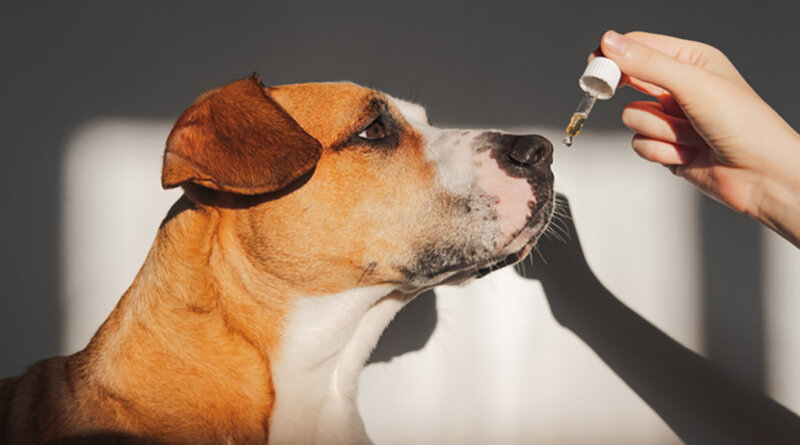Dog Sedatives For Anxiety During Grooming – Top Dog Tips
Are you planning on buying dog sedatives? Believe it or not, your pups can also experience anxiety. Not only when traveling, but most especially during grooming.
Sedating your dogs is an option, but is it worth it? When do you need to choose this option? Is it safe for your dogs?
Remember that not all dogs are trained or raised the same way. Some dogs may have trauma growing up. And so it depends on the pet, vet/groomer, and you as the owner to talk about this decision.

Sedative for Dogs and Good for Anxiety?
Dog sedatives for anxiety can help them relax in times of stress or nervousness. Dog Sedatives are often used to support your pup calm down if they are showing aggressive traits.
Some dogs live their whole life without having to be sedated. But in some cases, sedation is applied for their safety due to their long-term anxiety issues.
Dog sedatives can help aggressive or anxious dogs from grooming since this is not the best experience. It would be better to consult with your vet on what sedative is best for your pet.
Your vet can tell you not just what sedative to use, but you can also learn the side effects of using it. This can help you decide ultimately on whether to use the drug or not.
Consulting with your vet can also make sure that your dogs are not allergic to any sedatives that will be used. Other medicines can cause an allergic reaction to some dogs.
As some sedatives will make your dogs sleepy and not ease their anxiety or help them relax. So always keep in mind that there are side effects to consider when choosing to sedate your dogs.
Sedatives are not just for grooming. You can use it for hyperactive dogs that just underwent surgery. You can also use it for medical purposes like having aggressive x-ray dogs.

Sedative for Dogs Examples
Not all dogs can use any sedative. There are sedatives that you can give orally, and there are others that you can inject
To some dogs, oral medication might not be enough. That’s when vets recommend the injectables. Injectable sedation tends to be more potent than oral ones.
Here are examples of sedatives that are used for dogs:
Trazodone Sedative for Dogs
Trazodone HCI was originally anti-depressants for humans and is used for trauma and stress. It is now known that it is also effective and safe for dogs or even cats with anxiety.
Trazodone is effective in helping calm your dogs in times of grooming, visiting the vet, fireworks, thunderstorms, or any other short-term stress for your pets.
Trazadone helps with the balancing of serotonin in our bodies. Serotonin is the hormone that stabilizes our “feel-good” mood or the happiness of the body.
It is best given before the trigger of anxiety, such as before going to the vet or before grooming, and before a thunderstorm.
Acepromazine Sedative for Dogs
It is the most common oral dog sedative medication. Its primary objective is to block the dopamine receptors of the brain. It’s kind of a tranquilizer for your dogs to lessen stress or anxiety.
Dosage of acepromazine depends on the pet’s breed, health, size, or the reason the drug is being taken.
Acepromazine can have different effects on pets. Some can appear to be not sedated at all, and others can just lay flat. A vet’s guidance with this drug is advised before giving it to your pets.
Acepromazine can be injected rather than be given through tablets. An option would be injecting it between the gums and cheeks of your dogs.
This procedure is much more reliable for sedation.
Benadryl as a Sedative for Dogs
Benadryl is technically not a dog sedative and is used to cure allergic symptoms. But being sedated is a common side effect when taking it.
You can buy Benadryl over-the-counter, but it’s always advised to check in with your vet for the correct dosage.
Benadryl has an excellent efficiency for your dog’s motion sickness. But not all the time, as it can also have an opposite effect on your pets that can cause hyperactivity instead of sedation.
Diazepam
Diazepam is a benzodiazepine tranquilizer used in veterinary for sedating or reducing the anxiety of the dog.
Not only can it be used as a sedative, but you can also use it to treat behavioral problems like aggression.
In veterinary medicine, it can also be used as an anticonvulsant to treat seizures.

Symptoms of Dog Anxiety
you can expect dog anxiety in certain situations. The best example would be a visit to the vet. Another would be traveling and welcoming a new pet to your home.
Thunderstorms can also trigger their anxiety. That’s why they’re hiding when they hear thunder or even the occasional fireworks.
Here are some symptoms of dog anxiety that you should look out for:
Aggressive Behaviors
Fear or anxiety-related aggression is one of the most common aggression in dogs. Dogs experiencing this tends to be more defensive to a specific threat.
Dogs may have developed an instinct to be aggressive on things that they don’t know anything about. Their aggression can also be inherited from their parents or their specific breeds.
Aggression is most commonly present in their puppy stage at 3 to 4 months. Moreover, dogs can develop their aggression through their adolescence stage too.
This may develop due to improper teaching of socialization or even no socialization at all.
Panting
If you notice that your dog is panting, it may be experiencing hotness, excitement, or stress.
Always check in on your dog because panting is one of the symptoms of nervousness or anxiety.
Monitoring your dog’s temperature in these times can help to address if it’s an anxiety issue or just a body temperature-related symptom.
Depression
Yes, like humans, your beloved furry best friends can get depressed too. Dog depression’s symptoms are a bit similar to humans.
Your dog will be inactive, their eating and sleeping patterns are changed, they don’t enjoy the things they usually do.
Furthermore, it would be better to consult your vet, too, as this can cause other medical problems.
It’s always better to have a complete check-up to know what are the causes of these symptoms.
Excessive Drooling
Another thing that you should look out for is drooling. Excessive drooling is a sign that your dog is under a lot of stress from separation anxiety.
Sometimes you wonder when you get home and you find your dog soaked in drool, these are signs that your dog feels trapped or in a panic.
Excessive Barking
Your dogs tend to bark excessively when experiencing separation anxiety. With excessive barking, they also tend to do repetitive things like running around in circles.
Other symptoms include pacing and restlessness.

Dog Sedative Alternatives
Trazadone? Acepromazine? Diazepam? If you’re not comfortable using dog sedatives, there are still other ways of medication to help calm your dogs.
A few examples would be aromatherapy, CBD Oils, and other herbal supplements that can help your dogs.
Aromatherapy for Dogs
A dog’s brain can analyze smell 40 times better than humans. This makes aromatherapy ideal for dogs. But since a dog’s nose is much more powerful than ours, we have to be careful on their absorption.
Using diluted essential oil can help prevent the scent that can overwhelm your dogs and a possible irritation on their skin.
Proper use of aromatherapy can create a calm and peaceful environment for your dogs.
Here are examples of essential oil that can help your pets:
- Lavender – well-known stress and fear reliever.
- Bergamot – for balancing emotions like frustrations, panic, and even depression.
- Sweet Marjoram – for the muscle and digestive cramps.
- Ylang Ylang – an oil that has a sedative effect and can help calm the dog’s nervousness.
- Spikenard – For physical and emotional wounds. It can also help with PTSD.
- Rose Damask – a calming oil that can help with anxiety, anger, trauma, and panic.
- Geranium Rose – good for balancing the dog’s moods
- Frankincense – can help with breathing exercises in times of stress
Aromatherapy or essential oil therapy not only can work on dogs but on other pets like cats too.
Herbal and Natural Remedies
If you want a more natural way of soothing your dog’s anxiety, there are also herbal treatments that can help you. Moreover, it’s still advisable to consult with your vet in this matter.
Herbal supplements like Scullcap and Valerian tablets can naturally lessen your pet’s anxiety with no drowsiness.
These are great alternatives if you don’t want your pet to feel shaky or drowsy.

CBD For Dogs
It is now known that medical marijuana can treat humans with different health problems. But is it safe for your pets?
There aren’t many scientific studies on CBD for pets. But there’s an increasing number of paw-parents recommending it for helping your dogs calm down from anxiety or panic.
CBD or Cannabidiol is a natural component in cannabis. It doesn’t include tetrahydrocannabinol (THC) which is the psychoactive part of marijuana.
CBD is strictly the medicinal benefit of hemp and is entirely natural. So if you’re wondering that if your dogs can get high from CBD, the answer is a big fat NO.
A lot of companies sell CBD Oils or CBD treats. But it’s your duty as the owner to do your research.
Ensure that the CBD Oil company you’re buying from is transparent on the way their product and they are willing to show test results for safety.
Research and find where they are getting their CBD. Make sure that it is extracted from hemp.
The use of CBD also differs on where do you live. Medical cannabis might be legal for human consumption only.
There are still states that don’t authorize vets to prescribe CBD products for animals.
CBD for pets is now sold in the form of oils, treats, and even creams. The dosage for this still depends on your pets. Always start with just a tiny dose.
Remember that it’s your pet. It’s your responsibility to monitor the result and make adjustments from there.
Effects of CBD on Dogs
Try giving CBD to your dogs 20-30 minutes before a firework show or a thunderstorm.
You’ll know if it’s effective when you find your pup relaxed and not hiding under your bed or any other furniture.
Furthermore, for harmful effects, look out for panting, vomiting, and loss of balance.
This may indicate that your dog has consumed too much of it, and your best option is to visit your vet.
Exercise
If you’re too busy and you cannot take your dogs for walks, this can trigger loneliness, stress, and anxiety.
Making an exercise schedule for your dog every day is a great way to start.
Exercise by going out of the house. Taking daily walks to the dog park will not only help them stretch their bones, but they will also be able to socialize with other dogs.
Exercising is probably the best home remedy for dog anxiety. Nothing beats a good quality time with your dog to strengthen your relationship.
If you want a different exercise than walking, a few examples are:
- Swimming
- Fetch
- Hiking
- Hide-and-Seek
- Tug-Of-War
- Agility Training

Dog Sedatives Final Thoughts
Just like us humans, dogs can also experience anxiety. Their anxiety can often be triggered by grooming, vet visitation, thunderstorms, and the occasional fireworks.
Fortunately, there are now drugs called sedatives that can help our fur best friends calm down. But sedatives are not only used for anxiety.
Dog sedatives can help not only the pets but also groomers. Grooming is not always the best time for some dogs.
Other dogs tend to be more aggressive when they’re at the vet or with a groomer.
With these sedatives, groomers’ jobs can get a lot easier since the dog is too wobbly to fight back.
Sedatives can also help aggressive dogs that need immediate medical attention, like x-rays.
Always remember that it is your responsibility as the parent to do your research on your pets.
It’s always recommended to consult with your vets rather than making your prescriptions.
READ NEXT: 10 Best Dog Anxiety Medications (Over the Counter)
Related



